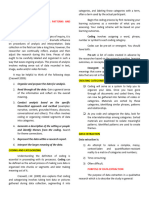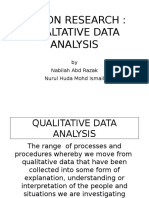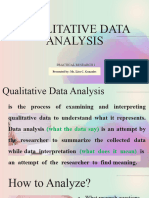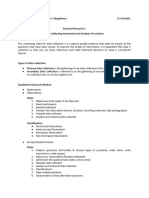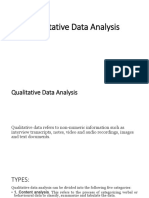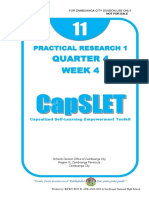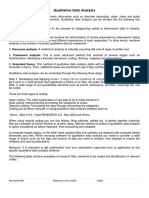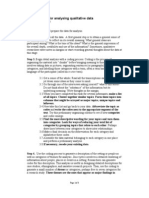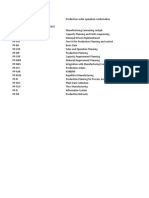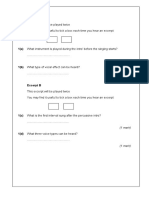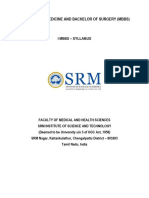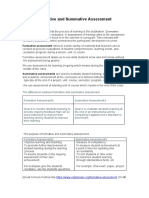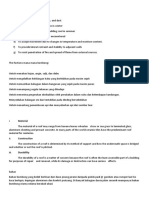0% found this document useful (0 votes)
19 views43 pagesQualitative Data Analysis
The document outlines steps for qualitative data analysis, emphasizing the importance of coding to identify themes and patterns from raw data. It details methods for coding, including initial readings, line-by-line coding, and organizing codes into categories and themes. Additionally, it discusses the presentation and discussion of findings, highlighting the distinction between reporting results and interpreting their significance.
Uploaded by
Axel Mods HDCopyright
© © All Rights Reserved
We take content rights seriously. If you suspect this is your content, claim it here.
Available Formats
Download as PDF, TXT or read online on Scribd
0% found this document useful (0 votes)
19 views43 pagesQualitative Data Analysis
The document outlines steps for qualitative data analysis, emphasizing the importance of coding to identify themes and patterns from raw data. It details methods for coding, including initial readings, line-by-line coding, and organizing codes into categories and themes. Additionally, it discusses the presentation and discussion of findings, highlighting the distinction between reporting results and interpreting their significance.
Uploaded by
Axel Mods HDCopyright
© © All Rights Reserved
We take content rights seriously. If you suspect this is your content, claim it here.
Available Formats
Download as PDF, TXT or read online on Scribd
/ 43









